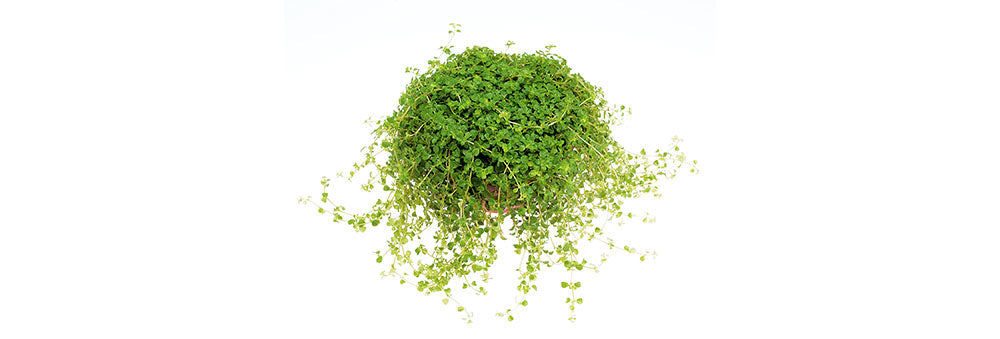Baby's Tears (Soleirolia soleirolii)
Baby's Tears Plant Features
Baby's tears is a charming houseplant that forms a dense mat of lush, rich green leaves and creeping stems that grow horizontally over flat surfaces or trail like a full head of hair from hanging baskets. Popular for generations, baby's tears is easy to grow. Its thickly growing leaves makes baby's tears an excellent houseplant for just about every decorating style.Baby's Tears Questions?
We love to chat about plants! Email us your questions and one of our experts will get back to you!
Baby's Tears Growing Instructions
Grow baby's tears in medium light for best results. It can take brighter light indoors, especially in Northern climates, but needs more frequent watering with additional light. Baby's tears appreciates somewhat moist -- but not soggy -- potting mix, so water enough to keep the plant from drying out. If it does dry out too much, the plant may wilt dramatically, but usually recovers quickly once you water it again, so don't be too alarmed.Baby's tears appreciates abundant relative humidity (but doesn't require it). If you'd like to boost the moisture in the air for your baby's tears, consider keeping your plant in a more humid room, such as a kitchen or bathroom; placing your baby's tears on a saucer of pebbles and water (with the bottom of the pot resting atop the pebbles, above the water); grouping your baby's tears with other houseplants (as all plants add moisture to the air through their breathing process); or putting a small humidifier near your plant.
Note: Baby's tears is not intended for human or animal consumption.
-
Water
Medium water needs
-
Light
Indoors: Medium light
-
Colors
Green
-
Special Features
Purifies the air
Complement your Baby's Tears
Fern, HouseplantMake ferns look even more lush by underplanting them with soft-looking baby's tears.
Peperomia
Peperomia is a perfect terrarium plant; baby's tears is, too!
Banana
Baby's tears is a wonderful living mulch under taller banana.

